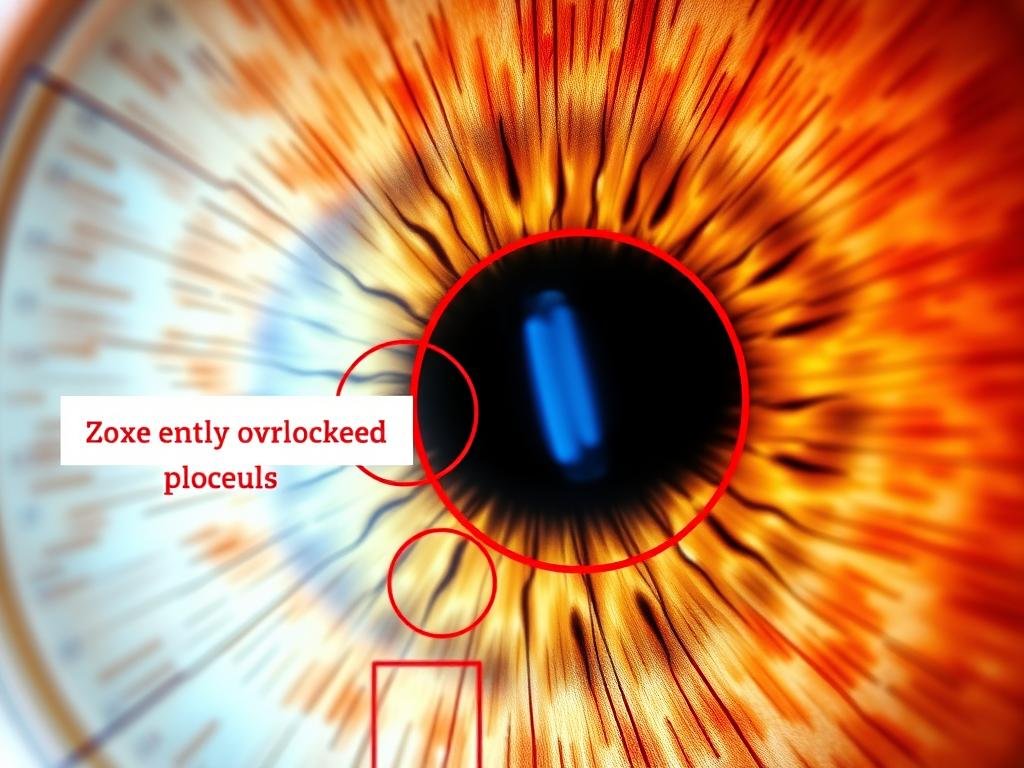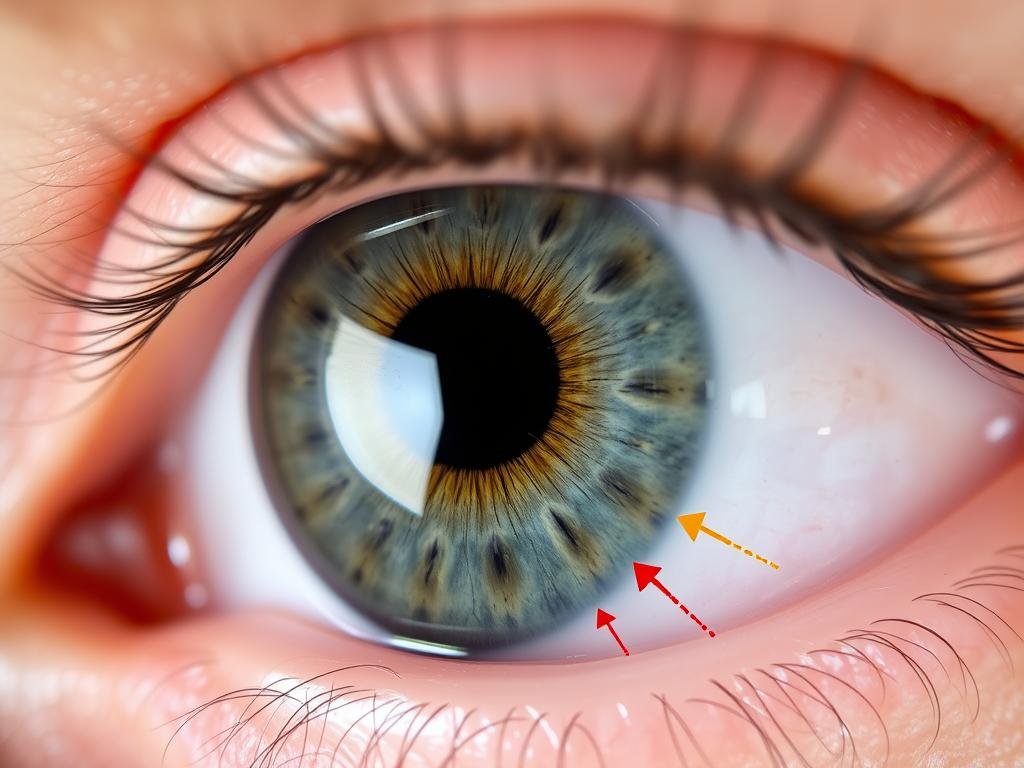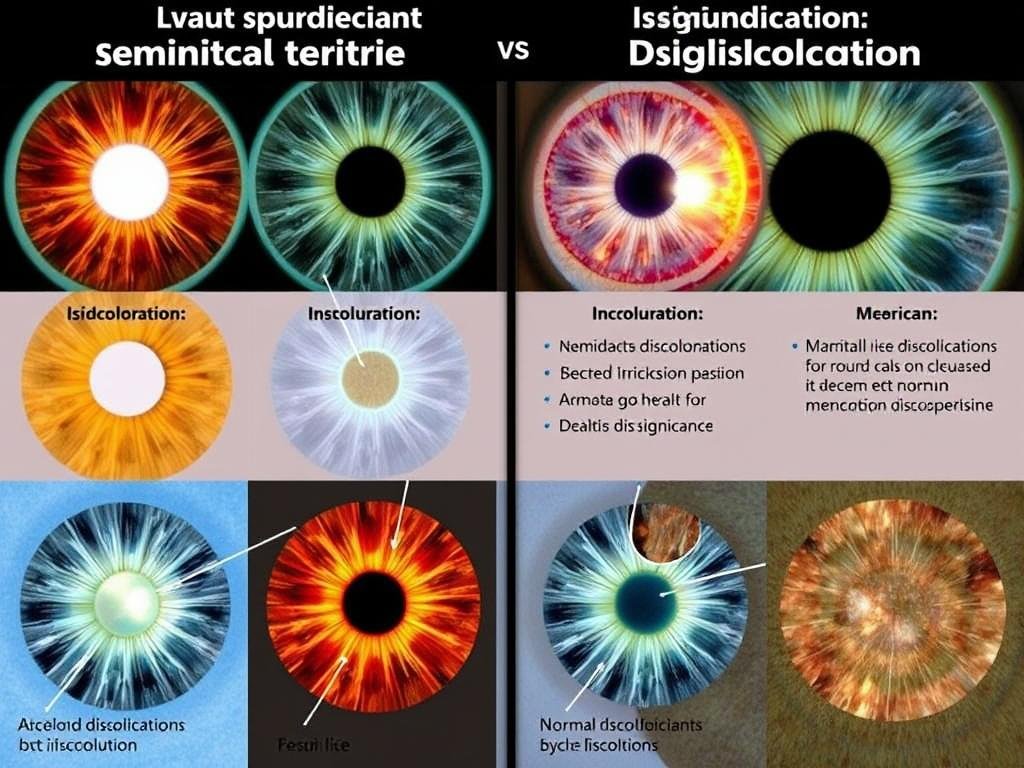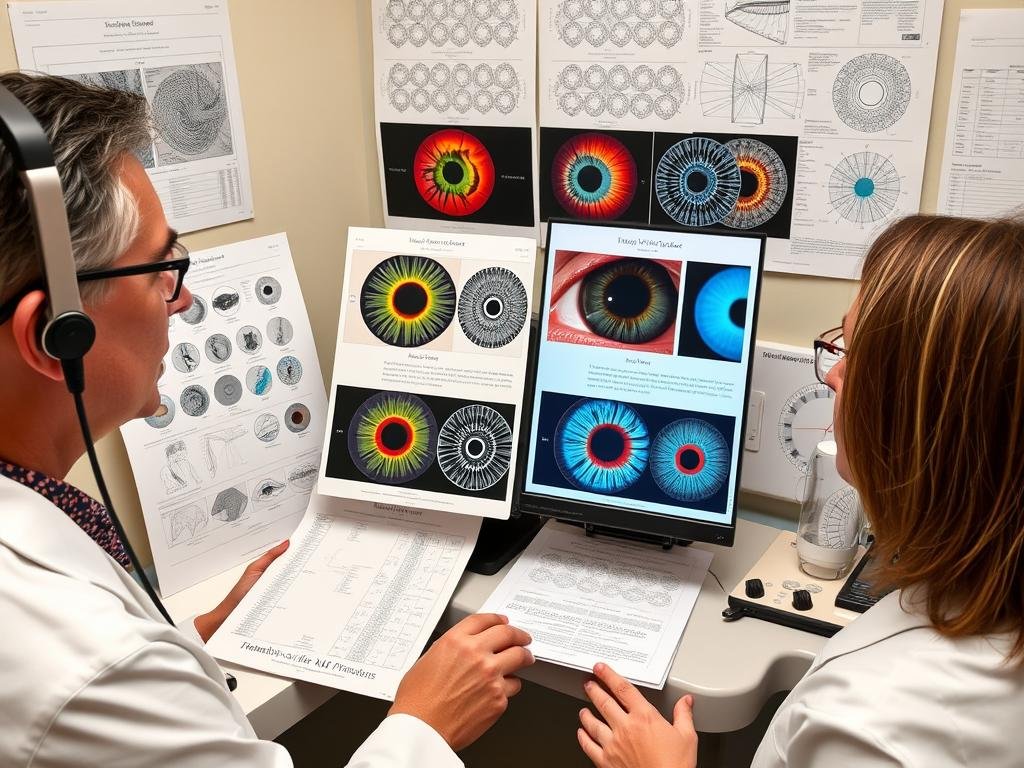Introduction to Diagrama de iridologie Analiză
A comprehensive diagramă de iridologie mapping iris zones to corresponding body systems
Iridology is the study of the iris—the colored part of your eye—to assess potential health conditions. Practitioners believe that different zones of the iris correspond to various organs and systems in the body. An diagramă de iridologie serves as a map that helps interpret these connections.
The fundamental principle behind iridology suggests that the iris contains detailed information about your body’s constitutional strengths and weaknesses. Each section of the iris is believed to correspond to specific organs and body systems, with changes in color, texture, and markings potentially indicating health issues in those areas.
A standard diagramă de iridologie divides the iris into multiple sections, similar to a clock face. For example, the right iris typically corresponds to the right side of the body, while the left iris reflects the left side. The chart further segments these areas to represent specific organs like the liver, kidneys, digestive system, and more.
New to Iridology?
Download our beginner’s guide to understanding the basics of iridology chart interpretation and start your journey with confidence.
Get Free Beginner’s Guide
7 Critical Errors in Diagrama de iridologie Interpretation
Even with a comprehensive diagramă de iridologie at hand, beginners often make several critical mistakes that can lead to inaccurate health assessments. Understanding these common errors will help you develop more precise interpretation skills and derive greater value from this alternative diagnostic method.
Mistake #1: Overlooking Diagrama de iridologie Zones
One of the most common mistakes beginners make is failing to recognize the importance of all zones on an diagramă de iridologie. Many newcomers focus exclusively on prominent markings while overlooking subtle changes in less noticeable areas. Each zone of the iris corresponds to specific organs and systems, and neglecting certain areas can result in incomplete health assessments.
For example, the outer rim of the iris (known as the autonomic nerve wreath) provides crucial information about the nervous system, while the area around the pupil relates to the digestive system. Beginners often concentrate on obvious markings in the middle zones while missing important indicators in these boundary areas.
“The comprehensive nature of an iridology chart requires equal attention to all zones. Each section tells part of the body’s story, and overlooking any area is like reading only half a book.”
– Dr. Bernard Jensen, Pioneer in Iridology
Mistake #2: Misreading Pupil Border Clues in Diagrame de iridologie
The pupil border (also called the collarette) is a critical area on any diagramă de iridologie as it represents the digestive system. Beginners frequently misinterpret the significance of waves, breaks, or discolorations along this border. A wavy or irregular pupil border might indicate digestive issues, while breaks could suggest specific weaknesses in the digestive tract.
Another common error is confusing normal pupil variations with health indicators. The pupil naturally changes size in response to light, and these normal fluctuations should not be mistaken for health concerns. True digestive indicators appear as consistent structural features regardless of pupil dilation.
Pentru sfat: When examining the pupil border on an iridology chart, always ensure consistent lighting conditions to avoid misinterpreting normal pupil responses as health indicators.
Mistake #3: Ignoring Constitutional Types in Diagrama de iridologie Analiză
Constitutional types form the foundation of accurate diagramă de iridologie interpretation, yet beginners often overlook this crucial aspect. The three primary constitutional types—lymphatic, hematogenic, and neurogenic—each display distinct iris characteristics that significantly influence how markings should be interpreted.
For instance, a lymphatic constitution typically shows a whitish iris with loose fibers, while a neurogenic constitution presents with tightly packed fibers and a more defined structure. Failing to identify the constitutional type before analyzing specific markings can lead to serious misinterpretations, as the same marking might indicate different health conditions in different constitutional types.
Lymphatic Constitution
- Whitish or light blue iris
- Loose, widely spaced fibers
- More susceptible to lymphatic system issues
Neurogenic Constitution
- Blue or gray iris
- Tightly packed, dense fibers
- More sensitive nervous system
Mistake #4: Confusing Acute/Chronic Markers in Diagrame de iridologie
Distinguishing between acute and chronic conditions is essential in diagramă de iridologie analysis, yet many beginners struggle with this differentiation. Acute conditions typically appear as white or bright markings that seem to be “active” or on the surface of the iris, while chronic conditions manifest as darker, more embedded markings.
A common error is misinterpreting chronic markings as less significant because they may appear less prominent than bright acute markings. In reality, chronic markings often indicate long-standing health issues that require more attention. Similarly, beginners might overreact to acute markings without recognizing they often represent temporary conditions or healing processes.
| Marker Type |
Aspect |
Semnificaţie |
Common Misinterpretation |
| Acute |
White, bright, raised |
Recent or active condition |
Overestimating severity due to visibility |
| Chronic |
Dark, embedded, settled |
Long-standing condition |
Underestimating importance due to subtlety |
| Vindecare |
White lines fading to normal |
Recovery process |
Mistaking for new acute condition |
Need Help With Your Iridology Analysis?
Our certified iridologists can help you accurately interpret your iris patterns and provide personalized health insights.
Programează o consultație
Mistake #5: Neglecting Fiber Density in Diagrama de iridologie Evaluation
Fiber density refers to the closeness and arrangement of the iris fibers (trabeculae) and provides crucial information about overall constitution and resilience. When examining an diagramă de iridologie, beginners often focus solely on markings and discolorations while overlooking the underlying fiber structure.
Dense, tightly packed fibers generally indicate stronger constitutional health, while loose, widely spaced fibers might suggest lower vitality or resilience. Beginners frequently miss how fiber density affects the interpretation of other markings—the same marking might have different implications depending on whether it appears in an area of dense or loose fibers.
Another oversight is failing to notice how fiber patterns change across different areas of the iris. These variations can indicate different levels of strength or weakness throughout the body’s systems and should be carefully mapped on the diagramă de iridologie.
Mistake #6: Overinterpreting Minor Diagrama de iridologie Discolorations
Enthusiasm for discovering health insights can lead beginners to overinterpret minor discolorations or natural variations in the iris. Not every spot or color variation on an diagramă de iridologie indicates a health concern. Some discolorations are simply part of the natural iris structure or represent genetic traits rather than health issues.
A common example is mistaking normal pigmentation in brown eyes for toxicity indicators. Brown eyes naturally contain more melanin, which can create patterns that might be misinterpreted as concerning if the practitioner is more familiar with blue iris analysis. Similarly, small freckles or nevus in the iris are often genetic features rather than health indicators.
Important: Always consider the overall context of the iris, including constitutional type, fiber density, and consistent patterns across both eyes before drawing conclusions about minor discolorations.
Mistake #7: Failing to Cross-Reference Diagrama de iridologie Findings
Perhaps the most critical mistake beginners make is failing to cross-reference findings across both irises and with other assessment methods. Accurate diagramă de iridologie interpretation requires comparing observations from both eyes to identify consistent patterns and confirm findings.
Single markings appearing in only one iris may have less significance than those appearing in both. Additionally, beginners often neglect to verify their iridology findings with other health assessment methods or the person’s known health history, leading to conclusions that might not align with the individual’s actual health status.
Another aspect of cross-referencing involves comparing findings across different iridology systems. Various schools of iridology use slightly different chart mappings, and checking findings across multiple systems can help confirm observations and reduce interpretation errors.
Best Practices for Diagrama de iridologie Analiză
Now that we’ve explored common mistakes, let’s focus on best practices that can help you develop accurate and reliable diagramă de iridologie interpretation skills. These approaches will help you avoid the pitfalls we’ve discussed and enhance your ability to derive meaningful health insights.
How to Properly Map an Diagrama de iridologie

Systematic approach to mapping the iris using an diagramă de iridologie
Proper mapping begins with high-quality iris photography under consistent lighting conditions. Ideally, use natural light or specialized iridology cameras that provide clear, detailed images of the iris. Once you have good images, follow these steps for accurate mapping:
- Orient the iris correctly on the diagramă de iridologie, aligning the 12 o’clock position with the top of the chart
- Identify the constitutional type first, as this forms the baseline for all other interpretations
- Analyze the iris systematically, moving from the pupil outward in a clockwise direction
- Document all observations before drawing conclusions, noting the location, color, and structure of markings
- Compare findings between both eyes to identify consistent patterns
- Cross-reference with the person’s known health history and symptoms
Remember that accurate mapping requires patience and methodical observation. Rushing through the process or jumping to conclusions based on isolated markings will likely lead to misinterpretations.
Tools for Accurate Diagrama de iridologie Interpretation
Having the right tools significantly improves your ability to interpret diagrame de iridologie accurately. Here are the essential tools for proper analysis:
Imaging Equipment
- High-resolution iris camera
- Proper lighting (ideally natural or full-spectrum)
- Magnification tools (10x minimum)
Reference Materials
- Diagrame cuprinzătoare de iridologie
- Constitutional type references
- Tissue layer indicators
Documentation Tools
- Iris mapping templates
- Systematic recording forms
- Comparison worksheets
Digital iridology software has also become increasingly valuable, offering enhanced analysis capabilities and detailed mapping functions. These programs can help beginners identify patterns more easily and provide reference databases for comparison.
Master Iridology Chart Interpretation
Join our comprehensive online course to develop professional-level skills in iridology chart analysis and avoid common interpretation mistakes.
Enroll in Certification Course
Conclusion: Improving Your Diagrama de iridologie Reading Skills
Mastering diagramă de iridologie interpretation is a journey that requires patience, practice, and a methodical approach. By avoiding the seven common mistakes we’ve explored—overlooking zones, misreading pupil borders, ignoring constitutional types, confusing acute and chronic markers, neglecting fiber density, overinterpreting minor discolorations, and failing to cross-reference findings—you’ll develop more accurate and valuable analysis skills.
Remember that iridology is best used as part of a holistic health assessment rather than in isolation. When combined with other evaluation methods and a thorough understanding of the individual’s health history, diagramă de iridologie analysis can provide unique insights that might not be apparent through conventional approaches.
As you continue your iridology journey, focus on developing systematic observation skills, maintaining an open but critical mindset, and continuously expanding your knowledge through study and practice. With dedication and the right approach, you can transform from a beginner making common mistakes to a skilled practitioner offering valuable health insights.
Ready to Advance Your Iridology Skills?
Book a personalized mentoring session with our certified iridologists to receive expert guidance on your specific challenges with iridology chart interpretation.
Schedule Your Mentoring Session






















